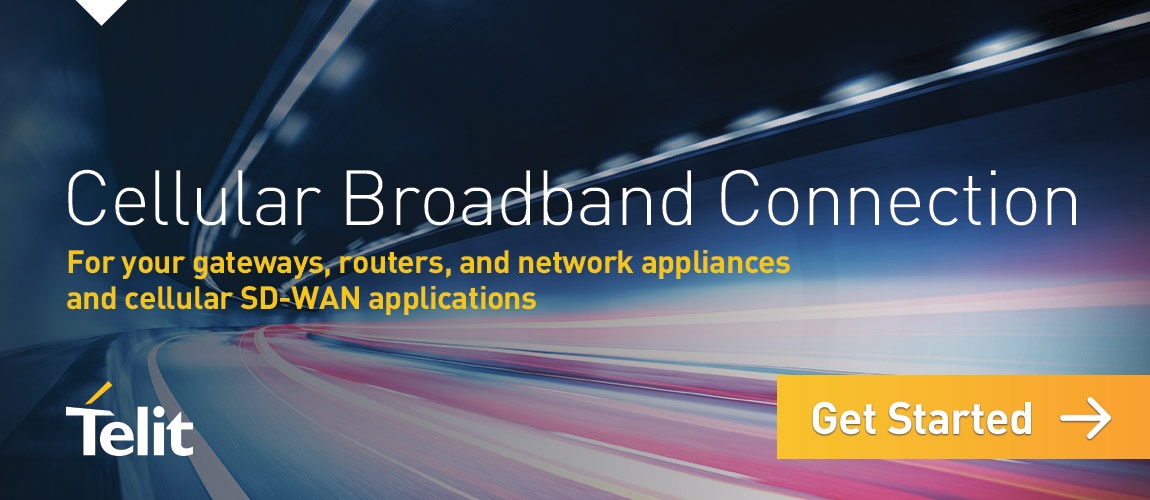Key Takeaways from 5G North America 2018
By Alon Segal
June 4, 2018
Fifth-generation mobile networks, or 5G, will have the power to transform the IoT space. With the ability to transmit data about 10 times faster than 4G LTE, this new mobile standard promises to be a game-changer for a variety of wireless applications. Though the roll out will take time, soon enough 5G will connect everything from wearables to robotics.

In mid-May, I attended 5G North America in Austin, TX. It was an excellent opportunity to hear directly from some of the key stakeholders (execs from AT&T, Verizon, T-Mobile, Sprint & Qualcomm) where they are on the road to commercial deployments of 5G.
Networks that participated in this event made one thing clear – in order to get ready for 5G, they are in the process of redesigning their core networks.
The goal is to virtualize networking into data centers vs. NOCs. It enables operators to offer NaaS (Networking as a Service) with much lower CAPEX and OPEX with larger flexibility because devices become simpler, the number of administrators is less, and service orchestration is easier. It turns parts of communications currently done in hardware into computing done in software. However, latency requirements of 5G applications (such as the connected car) of <10 ms require a distributed architecture – decentralizing cloud computing and pushing towards the edge of the RAN (cellular base stations for SDN-NFV and 5G-MEC).
MNOs will be able to offer their enterprise customer the ability to “customize” their use of the network – both the radio resources they consume (bandwidth and QoS (Quality of Service)) – by “slicing the network,” and inside their slice, allowing them to adjust the functionality, create virtual networks, and use it in a much more advanced fashion than today. In order to make this happen, Network Functionality Virtualization (NFV) and Software Defined Networks (SDN) with open APIs will be used to support these efforts.
The end result is that MNOs can expose enterprise customers to abilities and services far beyond what has been available in 4G.
To support the ever-growing demand for more bandwidth and more devices – spectrum is key. Given the issues with fragmentation and availability of “low” bands (used for LTE today), it is no surprise that 5G trials and early launches are based on mmWAVE frequencies.
However, there are issues with use of mmWAVE. It’s best suited for line of sight access as mmWAVE does not penetrate buildings and structures very well and deployment would mean network “densification” with large number of new mmWAVE cells added.
Until more bandwidth can be freed up on traditional LTE frequencies, there is renewed interest and emphasis on “mid band” and Citizen Broadband Radio Service (CBRS). This is no doubt a prime motivator in the T-Mobile and Sprint acquisition/merger.
In the interim, LTE Advanced Pro – with Licensed Assisted Access (LAA), 256 QAM, 4 CA, 4×4 MIMO enable 1Gbps on today’s infrastructure, paving the way to 5G.
It was evident that the MNOs presenting see a viable business case and competitive offering in providing 5G fixed-wireless-access. The early trials are all being followed with commercial launches in 2018 (announcements by ATT, Verizon, T-Mobile).
While this is not a true Fiber replacement (indeed AT&T core backhaul is based on Fiber), it does offer a compelling alternative and enables easier deployment than fiber. And with the “death” of copper/DSL, there are real opportunities. The MNOs were quick to realize this and are pushing forward with deployment allowing them to compete head-to-head with traditional cable offerings.
All the major networks are pushing forward quickly with the roll-out of the critical pieces on the road to 5G. Lots of new markets are being added for these key service enhancements at a fast pace. Support to the 256-QAM enhanced modulation scheme, which is critical for high bandwidth service is being rolled at neck-breaking speeds by U.S. operators; just as is 4×4 MIMO.
The major networks are very committed to delivering high bandwidth service right away with Category 18 roll outs to start improving their offering, particularly to the enterprise network market. On the consumer side, everything is geared toward the delivery of a good consumer experience, particularly regarding HD video on handheld devices.
By far, the biggest impact that 5G will bring to the industry is its ability to really redefine the way that enterprise network systems evolve from the cable-centric culture that they have today to a completely wireless and mobile reality with 5G.
IoT was an integral part of discussions at this conference as it continued to pop up in conversations across sessions and tracks. Organizations want to make sure that their IoT solutions are ready for the 5G future. While the initial introduction of 5G will be focused on FWA and high end handsets – it is built on a solid LTE Advanced Pro foundation, which will be carried forward and lives well within the 5G framework.

Telit’s broad portfolio of IoT modules allows organizations to create streamlined designs ready for 5G – Today. On the high-speed side of the market, we find those application areas most keenly dependent on enhancements proposed by 5G, including mobile broadband connectivity, and on the other end of the bandwidth requirements, our CAT-M / NB-IoT provide the building blocks for IoT LPWA solutions.